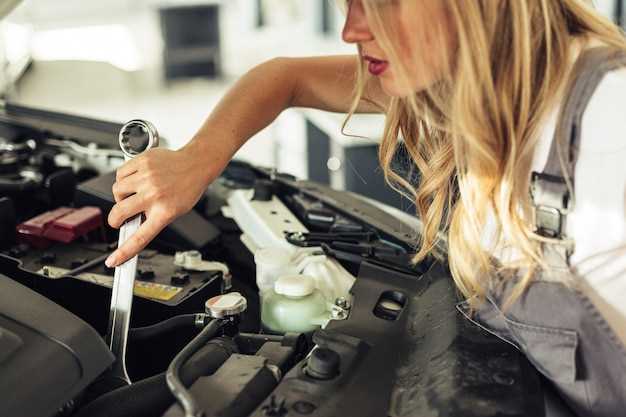
The engine mount plays a crucial role in the overall performance and stability of your vehicle. It serves as a support system for the engine, absorbing vibrations and shocks that occur while driving. When the engine mount begins to fail, it can lead to a variety of symptoms that can significantly impact your car’s drivability and longevity. Identifying these symptoms early can save you from costly repairs down the road.
Common symptoms of a failing engine mount include excessive vibration, unusual noises, and noticeable shifts in engine position. Drivers may experience increased vibrations, especially during acceleration or when idling. These vibrations can be uncomfortable and indicative of a larger issue. Additionally, you might hear clunking or banging sounds when shifting gears, which can signal that the mount is losing its ability to secure the engine firmly in place.
When faced with these symptoms, it is vital to address the issue promptly. Fortunately, there are solutions available to remedy a failing engine mount. Regular inspections and maintenance are essential to spot wear and tear early. In cases of severe damage, replacing the engine mount is often the most effective solution. With proper care and timely action, you can ensure that your engine remains stable and your vehicle operates smoothly.
Identifying Common Symptoms of Engine Mount Failure
Engine mounts play a crucial role in securing the engine to the vehicle’s chassis while absorbing vibrations. When these mounts begin to fail, several symptoms may become apparent, indicating that attention is needed.
One of the most noticeable symptoms is increased vibrations felt in the cabin, especially while idling. A failing engine mount can no longer effectively dampen engine vibrations, causing them to be transmitted to the vehicle’s interior. This may result in a noticeable shaking of the steering wheel or other parts of the car.
Another common symptom is abnormal noise. A deteriorating engine mount may produce clunking or bouncing sounds during acceleration or deceleration. These noises often occur due to the engine shifting positions in its mounts, leading to metal-on-metal contact.
Additionally, drivers may observe misalignment in the vehicle’s components. Failure of an engine mount can cause the engine to shift from its intended position, resulting in uneven gaps between components such as the hood and the engine itself. This misalignment can also affect the vehicle’s performance and handling.
If you notice any warning signs associated with engine mount failure, prompt inspection is essential. Ignoring these symptoms can lead to further damage to the engine and other related systems, ultimately resulting in more expensive repairs.
Diagnosing the Issue: How to Inspect Your Engine Mount

Inspecting your engine mount is essential for maintaining vehicle performance and safety. Start by visually examining the mount for any noticeable signs of wear or damage. Look for cracks, tears, or separation in the rubber and metal components. These indicators often suggest that the engine mount is failing and may require replacement.
Next, perform a physical check by applying pressure to the engine while it’s running. Use a pry bar to gently move the engine up and down. If you notice excessive movement or a clunking noise, it may signal that the mount is compromised. Engine mounts should ideally restrict engine movement, so any significant play indicates a problem.
Listen for unusual vibrations while driving, particularly during acceleration or braking. If you experience increased vibrations that weren’t present before, this could point to a failing engine mount. Additionally, pay attention to how the vehicle behaves; a faulty mount may cause an unpleasant driving experience, such as misalignment or shifts in weight distribution.
Finally, consult your vehicle’s service manual for specifications regarding engine mount inspection. Certain models may have unique characteristics that require specific techniques for a thorough assessment. Regular checks can prevent more severe issues and ensure your engine mount operates effectively.
Repair and Replacement Options for Engine Mounts

When experiencing symptoms of a failing engine mount, it is crucial to assess and address the issue promptly to prevent further damage to the engine and vehicle. The primary symptoms include excessive vibration, misalignment of the engine, and unusual noises during operation. If you notice these signs, you have several options for repair or replacement.
Repair Options: In some cases, minor issues with engine mounts can be addressed through repair. This may involve tightening bolts, applying additional damping materials, or using specialized adhesives to mitigate vibrations. However, these fixes are usually temporary and may not effectively resolve the underlying problems.
Replacement Options: The most reliable solution for failing engine mounts is replacement. The following options are available:
- OEM (Original Equipment Manufacturer) Mounts: These mounts are made by the vehicle manufacturer and provide a perfect fit, ensuring optimal performance and longevity. While often more expensive, they maintain the quality standards of the original parts.
- Aftermarket Mounts: Numerous manufacturers produce engine mounts that meet or exceed OEM specifications, often at a lower cost. It is essential to select reputable brands to ensure durability and effectiveness.
- Hydraulic Mounts: These mounts use fluid-filled sacs to absorb vibrations. They are particularly effective in reducing noise and enhancing comfort. Replacing traditional mounts with hydraulic options can improve the overall driving experience.
Before deciding on the repair or replacement of engine mounts, consult with a qualified mechanic. They can provide a thorough diagnosis and guide you toward the best solution based on the vehicle’s condition and your budget.
